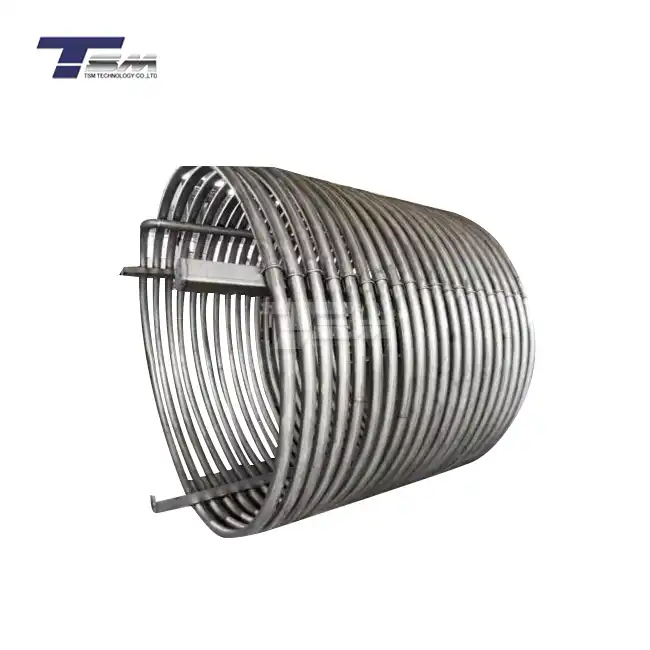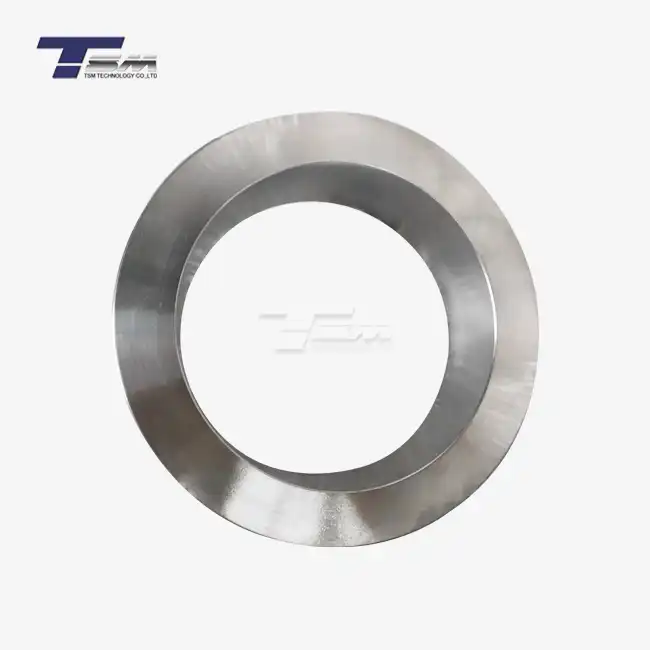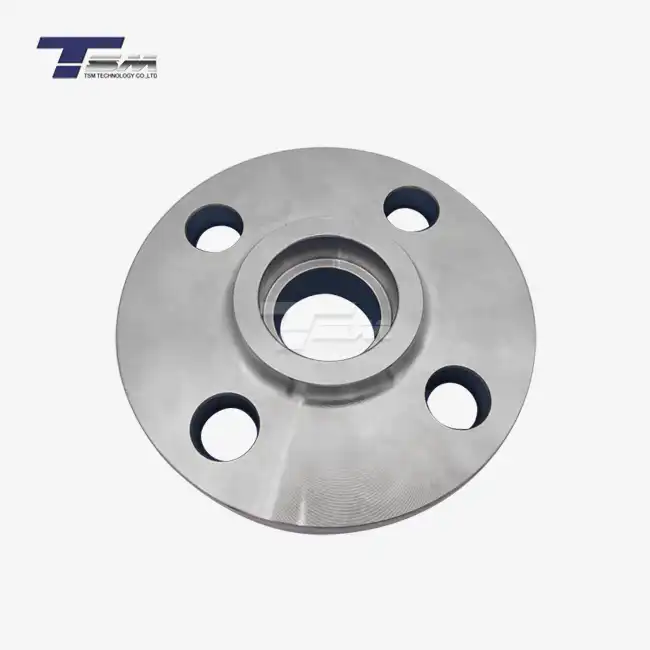Understanding Hastelloy C276 Round Bar Properties and Applications
Chemical Composition and Corrosion Resistance
Hastelloy C276 round bar boasts an impressive chemical makeup that contributes to its exceptional corrosion resistance. The alloy primarily consists of nickel, with significant amounts of molybdenum and chromium, along with smaller quantities of tungsten and iron. This unique composition results in a material that exhibits remarkable resistance to a wide array of corrosive media, including oxidizing and reducing environments. The high molybdenum content enhances its resistance to pitting and crevice corrosion, while the chromium forms a protective oxide layer, further bolstering its durability in aggressive chemical atmospheres.

Mechanical Properties and Strength
Beyond its corrosion-resistant qualities, the Hastelloy C276 rod demonstrates impressive mechanical properties. The alloy maintains excellent strength and ductility across a broad temperature range, from cryogenic conditions to elevated temperatures exceeding 1000°C. Its high yield strength and ultimate tensile strength make it suitable for applications requiring both corrosion resistance and structural integrity. Additionally, the material's low magnetic permeability and good weldability contribute to its versatility in various industrial settings.
Common Applications in Corrosive Environments
Hastelloy round bar finds extensive use in industries where corrosion resistance is paramount. Chemical processing plants often employ this alloy in equipment such as heat exchangers, reaction vessels, and piping systems exposed to aggressive chemicals. In the oil and gas sector, Hastelloy C276 components are utilized in offshore platforms, subsea equipment, and refineries to combat the corrosive effects of seawater and hydrocarbon processing. The material also sees application in pollution control systems, nuclear waste treatment facilities, and pharmaceutical manufacturing, where its ability to withstand both organic and inorganic corrosives proves invaluable.
Preparation and Handling of Hastelloy C276 Round Bar for Installation
Surface Preparation Techniques
Proper surface preparation is crucial for the successful installation of Hastelloy C276 round bar in corrosive environments. Begin by thoroughly cleaning the material to remove any contaminants, oils, or debris that could compromise its performance. Mechanical cleaning methods such as brushing, grinding, or sandblasting can be employed to achieve a clean surface. For more precise applications, electropolishing may be used to enhance the material's corrosion resistance by removing surface imperfections and creating a smooth, passive layer. It's essential to avoid using chloride-containing cleaning agents, as these can potentially initiate corrosion on the alloy's surface.
Handling and Storage Precautions
When handling Hastelloy round bar, it's imperative to prevent contamination and mechanical damage. Utilize clean, non-metallic gloves or tools to avoid introducing foreign particles or causing surface scratches. Store the material in a clean, dry environment, away from other metallic materials that could lead to galvanic corrosion. If long-term storage is necessary, consider applying a protective coating or wrapping to shield the Hastelloy C276 rod from environmental factors. Proper labeling and inventory management are also crucial to ensure traceability and prevent mix-ups with other alloys.
Cutting and Machining Considerations
Hastelloy C276 can be challenging to machine due to its work-hardening properties. When cutting or shaping the round bar, use sharp, carbide-tipped tools and maintain low cutting speeds with high feed rates to minimize work hardening. Adequate cooling is essential during machining operations to prevent overheating and maintain dimensional accuracy. For precision cutting, techniques such as water jet cutting or electrical discharge machining (EDM) can be employed to achieve clean, accurate cuts without introducing thermal stress to the material. Always follow manufacturer guidelines and industry best practices when working with this high-performance alloy.
Installation Techniques and Best Practices for Hastelloy C276 Round Bar
Welding and Joining Methods
When installing Hastelloy C276 round bar in corrosive environments, selecting the appropriate welding and joining techniques is paramount. Gas Tungsten Arc Welding (GTAW) and Gas Metal Arc Welding (GMAW) are commonly used methods for joining Hastelloy components. These processes provide excellent control and produce high-quality welds when performed correctly. It's crucial to use compatible filler metals, typically of the same or similar composition as the base metal, to maintain the alloy's corrosion resistance. Preheating is generally not required for Hastelloy C276, but proper heat input control is essential to prevent hot cracking and maintain the material's properties. Post-weld heat treatment may be necessary for certain applications to relieve residual stresses and optimize corrosion resistance.
Fastening and Assembly Considerations
When using mechanical fasteners to install Hastelloy round bar, it's important to select compatible materials to prevent galvanic corrosion. Fasteners made from similar nickel alloys or materials with comparable corrosion resistance should be used. Proper torque specifications must be followed to ensure secure connections without over-stressing the material. In highly corrosive environments, consider using insulating washers or gaskets to isolate dissimilar metals and prevent crevice corrosion. For threaded connections, apply an appropriate anti-seize compound to prevent galling and facilitate future disassembly if required.
Quality Control and Inspection Procedures
Implementing rigorous quality control measures is essential when installing Hastelloy C276 rod in corrosive settings. Non-destructive testing techniques such as ultrasonic testing, radiographic inspection, and dye penetrant testing can be employed to verify the integrity of welds and detect any potential defects. Surface finish inspections should be conducted to ensure that the material's protective passive layer remains intact. For critical applications, consider performing corrosion testing or simulations to validate the installation's performance under expected service conditions. Maintain detailed documentation of all installation procedures, material certifications, and inspection results to ensure traceability and compliance with industry standards.
Conclusion
Installing Hastelloy C276 round bar in corrosion environments demands a comprehensive approach that combines material knowledge, meticulous preparation, and precise execution. By understanding the alloy's unique properties, adhering to proper handling and preparation techniques, and implementing appropriate installation methods, engineers can harness the full potential of this exceptional material. The successful integration of Hastelloy round bar in corrosive settings not only extends equipment lifespan but also enhances operational safety and efficiency across various industries. As corrosion challenges continue to evolve, the proper installation of high-performance alloys like Hastelloy C276 remains crucial in safeguarding critical infrastructure and advancing technological capabilities in harsh chemical environments.
Contact Us
For expert guidance on selecting and installing Hastelloy C276 round bar for your specific corrosion-resistant applications, please contact our team of specialists at info@tsm-technology.com. Our extensive experience and commitment to quality ensure that you receive the optimal solution for your industrial needs.

_1739071678907.webp)

